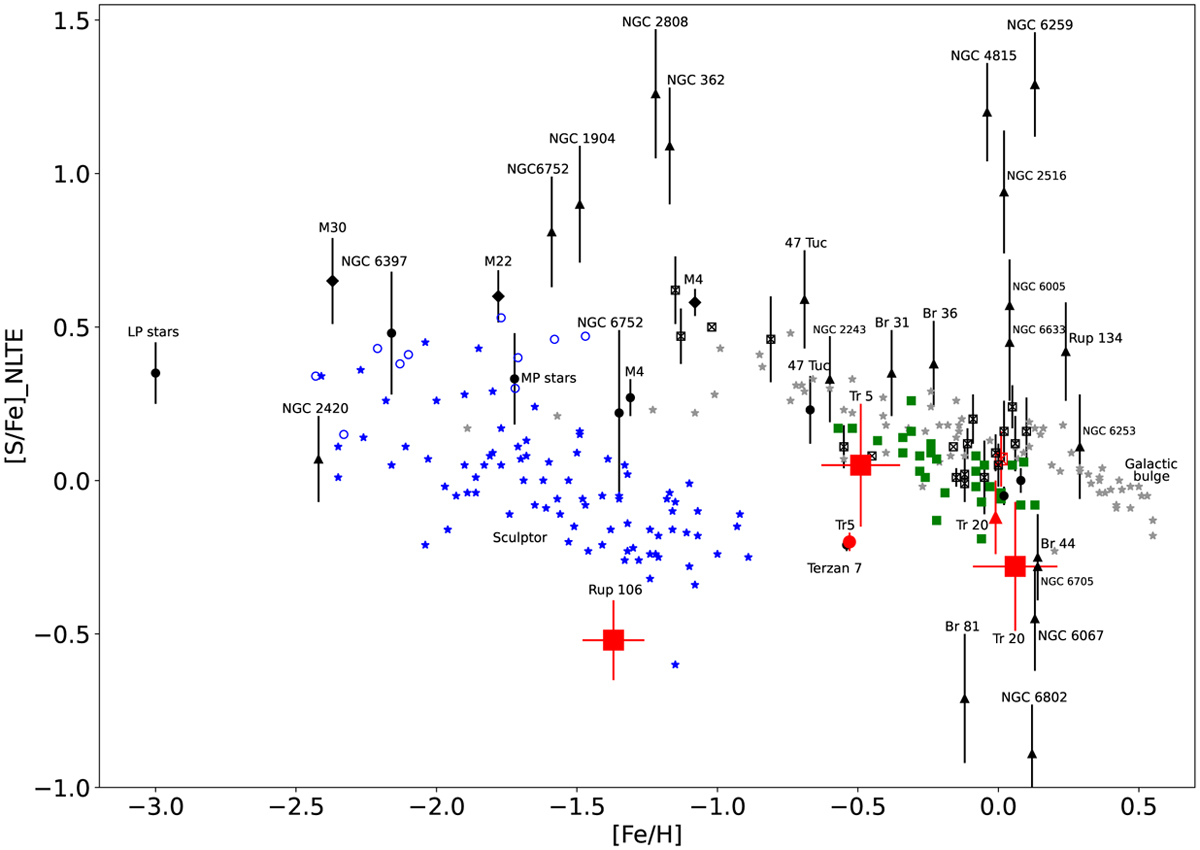Fig. 5

Download original image
[S/Fe]NLTE vs. [Fe/H] for the clusters analyzed in this work (red squares) compared to the literature. The blue open circles are the results obtained by Jönsson et al. (2011) for metal-poor stars. The Sculptor dSph galaxy (Skúladóttir et al. 2015) and the Galactic bulge (Lucertini et al. 2022) are shown as blue and gray stars, respectively. The green squares are the results of Ecuvillon et al. (2004) for planet-host stars and solar-type dwarfs. The black diamond symbols represent the Galactic halo GCs M4, M22, and M3O analyzed by Kacharov et al. (2015). The extremely metalpoor stars from the large program “First stars” (Cayrel & Spite 2004) analyzed by Spite et al. (2011) are shown by the LP point. The point MP stars are targets with [Fe/H] < −1.0 analyzed by Matrozis et al. (2013). The black points are GCs and OCs: NGC 6397 (Koch & Caffau 2011); NGC 6752 and 47 Tue (Sbordone et al. 2009); Terzan 7 (Caffau et al. 2005b); M 4, Trumpler 5, NGC 5822, and NGC 2477 (Caffau et al. 2014). The clusters from Duffau et al. (2017) and GES DR5 are shown as crossed squares and triangles, respectively. All the points have been scaled to our adopted solar abundances A(S)⊙ = 7.16 and A(Fe)⊙ = 7.52 (Caffau et al. 2011).
Current usage metrics show cumulative count of Article Views (full-text article views including HTML views, PDF and ePub downloads, according to the available data) and Abstracts Views on Vision4Press platform.
Data correspond to usage on the plateform after 2015. The current usage metrics is available 48-96 hours after online publication and is updated daily on week days.
Initial download of the metrics may take a while.


